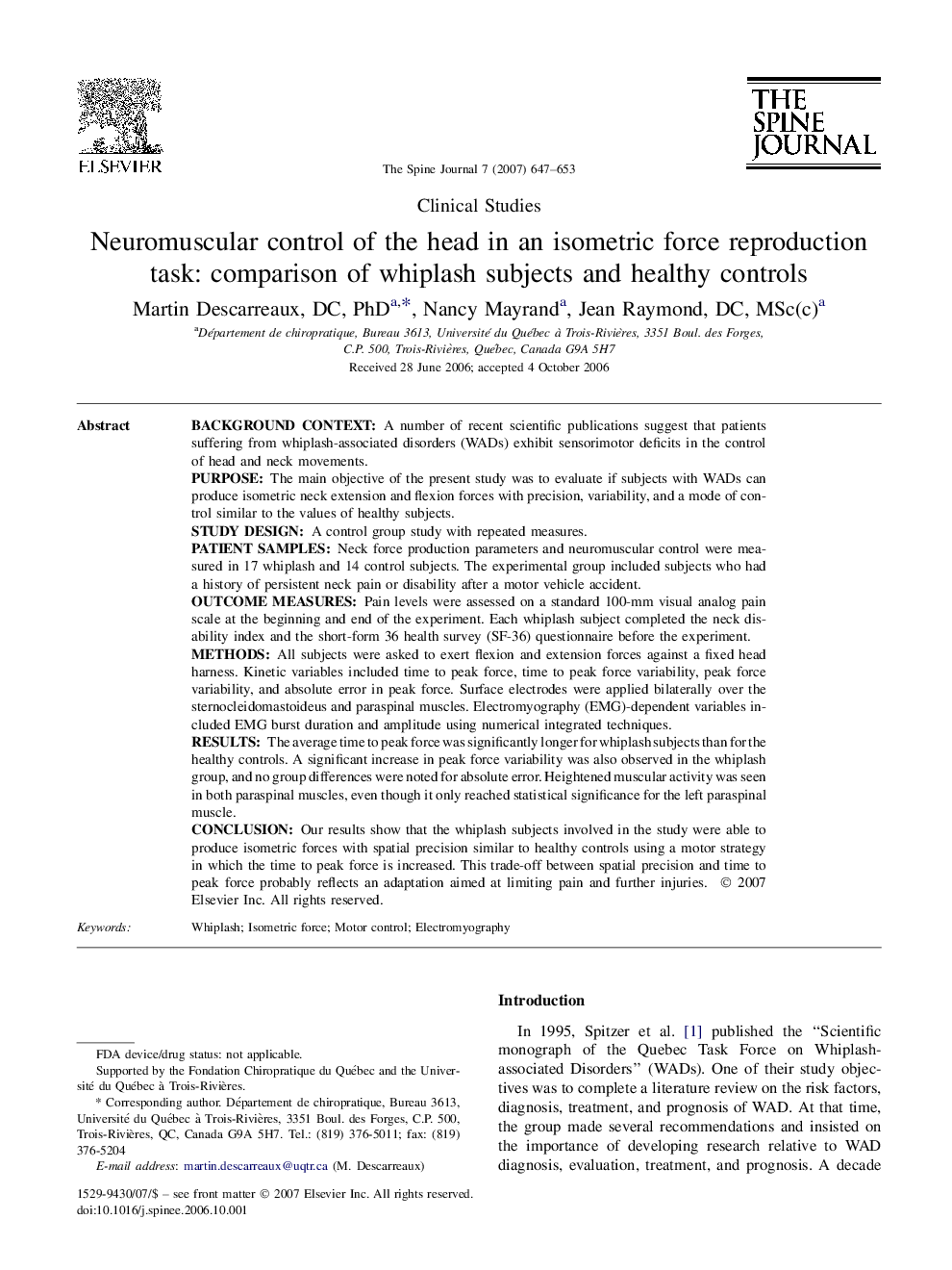| کد مقاله | کد نشریه | سال انتشار | مقاله انگلیسی | نسخه تمام متن |
|---|---|---|---|---|
| 4099879 | 1268663 | 2007 | 7 صفحه PDF | دانلود رایگان |

Background contextA number of recent scientific publications suggest that patients suffering from whiplash-associated disorders (WADs) exhibit sensorimotor deficits in the control of head and neck movements.PurposeThe main objective of the present study was to evaluate if subjects with WADs can produce isometric neck extension and flexion forces with precision, variability, and a mode of control similar to the values of healthy subjects.Study designA control group study with repeated measures.Patient samplesNeck force production parameters and neuromuscular control were measured in 17 whiplash and 14 control subjects. The experimental group included subjects who had a history of persistent neck pain or disability after a motor vehicle accident.Outcome measuresPain levels were assessed on a standard 100-mm visual analog pain scale at the beginning and end of the experiment. Each whiplash subject completed the neck disability index and the short-form 36 health survey (SF-36) questionnaire before the experiment.MethodsAll subjects were asked to exert flexion and extension forces against a fixed head harness. Kinetic variables included time to peak force, time to peak force variability, peak force variability, and absolute error in peak force. Surface electrodes were applied bilaterally over the sternocleidomastoideus and paraspinal muscles. Electromyography (EMG)-dependent variables included EMG burst duration and amplitude using numerical integrated techniques.ResultsThe average time to peak force was significantly longer for whiplash subjects than for the healthy controls. A significant increase in peak force variability was also observed in the whiplash group, and no group differences were noted for absolute error. Heightened muscular activity was seen in both paraspinal muscles, even though it only reached statistical significance for the left paraspinal muscle.ConclusionOur results show that the whiplash subjects involved in the study were able to produce isometric forces with spatial precision similar to healthy controls using a motor strategy in which the time to peak force is increased. This trade-off between spatial precision and time to peak force probably reflects an adaptation aimed at limiting pain and further injuries.
Journal: The Spine Journal - Volume 7, Issue 6, November–December 2007, Pages 647–653